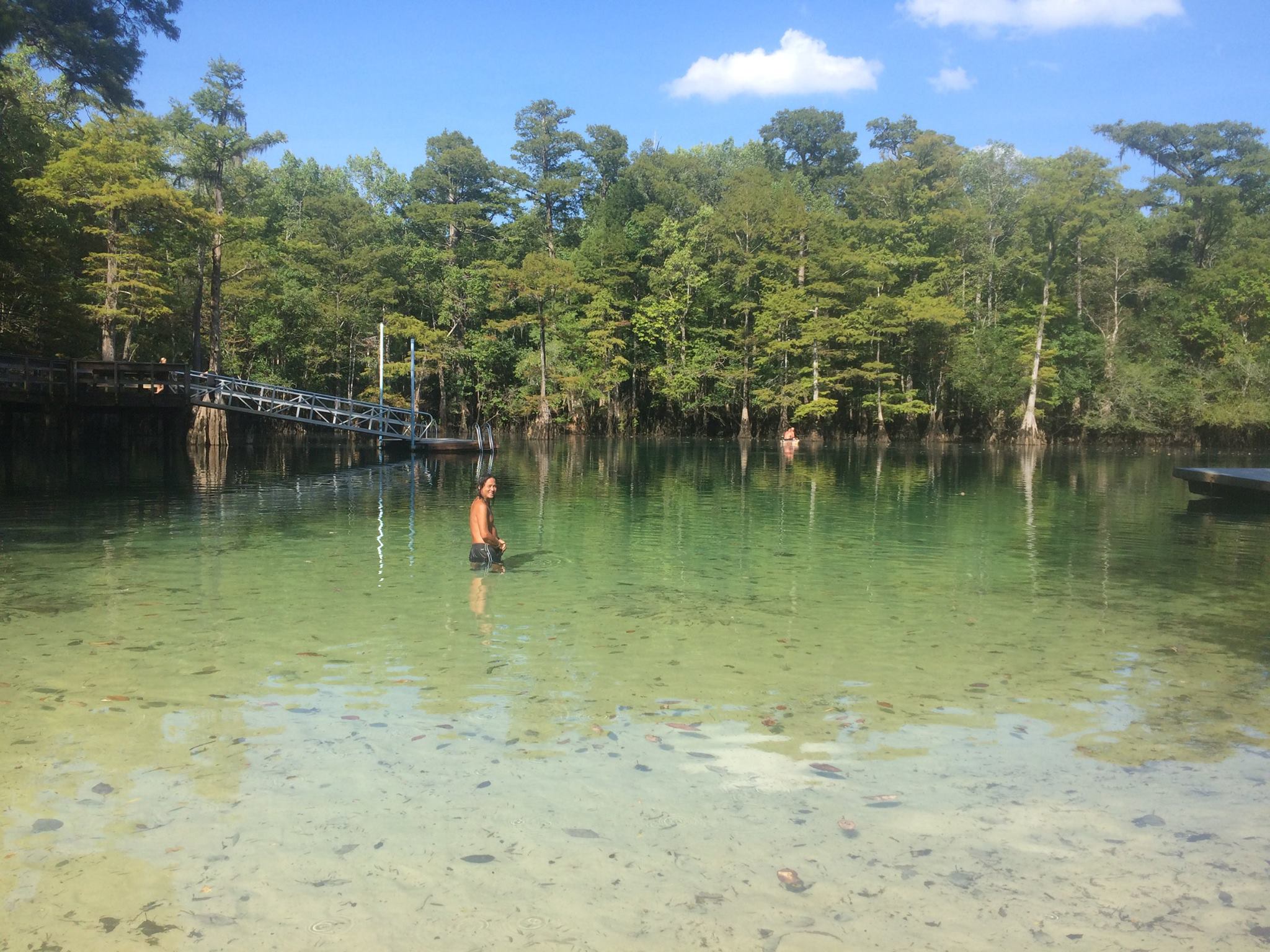
by Laura Tiu | Nov 18, 2016
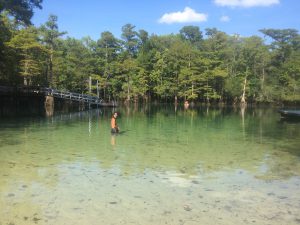
Snorkeler at Morrison Springs – Laura Tiu
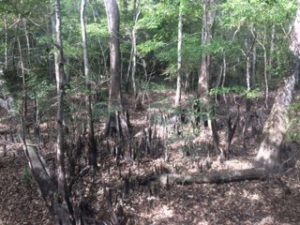
Morrison Springs Bald Cypress
There are over 1000 springs identified in Florida. In the Panhandle, the majority of the springs are karst or artesian springs rising deep from the Floridan Aquafer System within the states limestone base. Springs are unique and can be identified by perennial flows, constant water temperature and chemistry, high light transparency. This yields a freshwater ecology dependent on these features. Springs are classified based upon the average discharge of water but can exhibit a lot of variability based on water withdrawals and rainfall. These springs are some of our most precious water resources, supplying the drinking water our communities rely on, as well as providing great recreation opportunities.
Morrison Springs is a popular spring in northwest Florida and is one of 13 springs flowing into the Choctawhatchee River Basin. It is a large, sandy-bottomed spring surrounded by old growth cypress. The spring pool is 250 feet in diameter, discharges an average of 48 million gallons of water each day from three vents into the Choctawhatchee River as a second magnitude spring. The spring contains an extensive underwater cave system with three cavities up to 300 feet deep and is popular for scuba diving, swimming and snorkeling, kayaking, canoeing and fishing. Historically, it was privately owned and was a popular swimming hole for locals. In 2004, the state of Florida purchased the land containing the spring in the Choctawhatchee River floodplain. The land was leased to Walton County for 99 years. The county created a 161-acre park with a picnic pavilion, restroom facilities and a wheelchair-accessible boardwalk. A down-stream boat ramp provides access to the river away from swimmers and divers. There is no entrance fee.
Morrison Spring is filled with abundant fish and plant life. Fish include largemouth bass, spotted bass, hybrid striped bass, bluegill, sunfish, redbreast sunfish, warmouth, black crappie, striped bass, catfish, alligator gar, bowfin, carp, mullet and flounder or hogchoakers (freshwater sole). It is also home to some nocturnal freshwater eels that swim around the vent and delight the divers. Most are gray, about an inch in diameter and maybe a foot or two long. The spring supports many trees, plants, and grasses including bald cypress, live oak, red maple, pawpaw, red and black titi, Cherokee bean, sweetbay, blackgum, juniper, red cedar, southern magnolia, laurel oak, tupelo, hickory, willow, wax myrtle, cabbage palm, saw palmetto blueberry, hydrangea, St. John’s wort, mountain laurel, water lily, pickerelweed, pitcher plant, broad leaved arrowhead, fern, and moss.
Morrison Springs was previously considered one of the cleanest springs in Florida until 2010 (Florida Springs Initiative). All of Florida springs are currently at risk as the state population continues to increase. Spring flows are decreasing as the result of increasing extraction of groundwater for human uses. Development, and the resultant over pumping, and nitrogen pollution from agriculture both have impacts on the aquifer recharge areas. Existing groundwater pumping rates from the Floridan Aquifer in 2010 were more than 30% of average aquifer recharge (Florida Spring Initiative). The University of Florida IFAS Extension Agents in the Panhandle occasionally conduct interpretive guided tours of the Springs to help citizens understand the importance of protecting this unique water source.
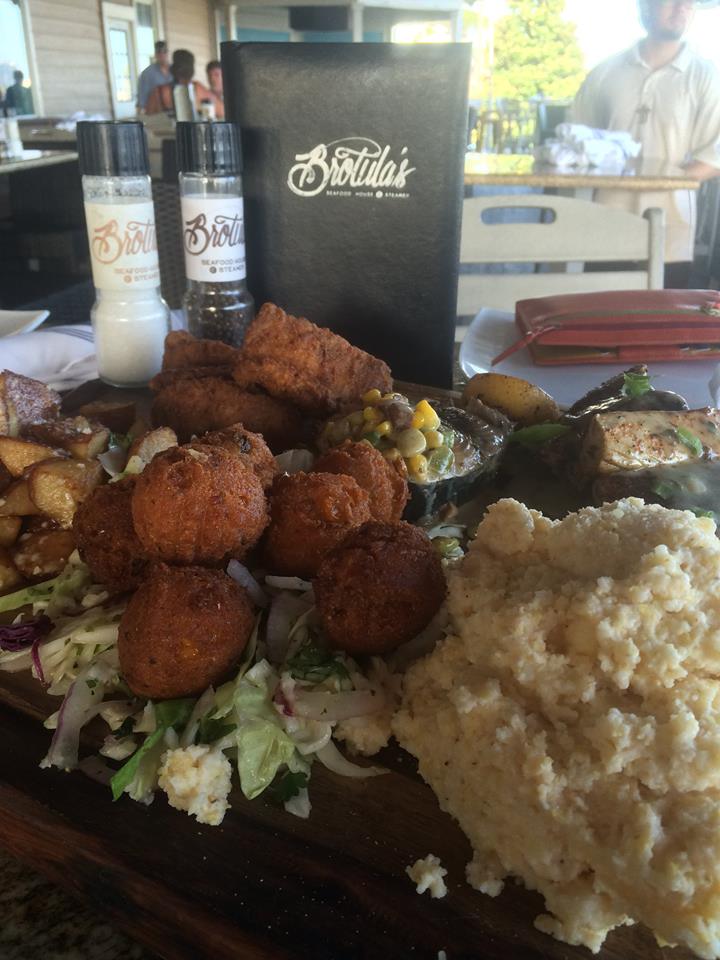
by Laura Tiu | Oct 7, 2016
I’ve spent the past 25 years studying and growing fish. When folks find out I’m a fish head, I often get a lot of questions about the safety and sustainability of many seafood products. It seems that the media and other groups have done a good job of scaring and confusing the American public to the point that some forgo consuming seafood altogether. That is such a shame because seafood is great for human health. Seafood is typically high protein, low in fat and calories and bursting with good for you stuff like omega-3s.
Seafood is either wild caught, aquacultured (farm-raised), or both. Both wild fisheries and aquaculture have their pros and cons. Overfishing, illegal fishing, bycatch, habitat degradation and lack of effective regulation have led to declines in wild fisheries. Aquaculture has been plagued with claims of pollution, disease and escapees. With all this negative press, what is the consumer to do?
You can choose your seafood based on its sustainability. Sustainable seafood has been caught or farmed in sustainable ways. And there are several groups today that make choosing these sustainable product easy. Once such group is the Monterrey Bay Aquarium. Their Seafood Watch program makes it easy for you to choose seafood that’s fished or farmed in ways that have less impact on the environment.
Using science-based criteria and input from fisheries and aquaculture experts, Seafood Watch has developed standards and guiding principles to develop consumer friendly guides. The guides are specific to each state and there is even one for sushi. These printable guides fit easily into your wallet so that you can use them anytime you purchase seafood. The guide shows with seafood items are “Best Choices” or “Good Alternatives,” and which ones you should “Avoid.” They also have an app for android and IPhone making it easier than ever to get the latest recommendations for seafood and sushi, learn more about the seafood you eat, and locate or share businesses that serve sustainable seafood.
As consumers, we have a lot of power in the seafood marketplace. With over 75% of the world’s fisheries either fully fished or overfished, we need to make smart choices about the seafood we buy and consume. By supporting fisheries and fish farms that are working hard to limit their impact on the environment we help protect the seafood we love. By using the seafood guide for your region, you’re making choices based on the best available information and supporting environmentally friendly fisheries and aquaculture operations.
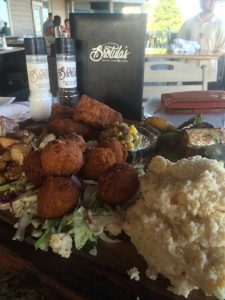
Brotula’s Restaurant in Destin, Florida will cook your fresh catch to perfection.

by Laura Tiu | Sep 23, 2016

Rocky Bayou Aquatic Preserve – Choctawhatchee Bay, Niceville, Florida – Photo by Laura Tiu
September 17-24, 2016 was the nation’s 28th time to celebrate America’s coasts and estuaries during National Estuaries Week. This week helps us to remember to appreciate the challenges these coastal ecosystems face, along with their beauty and utility.
Estuaries, semi-enclosed bodies of water with both fresh and saltwater, dot the Gulf Coast of the United States from Brownsville Texas to Key West, Florida. These estuaries are important as they serve as drainage basins for many of the large river systems, and play a significant role in the nation’s seafood industry.
Florida’s six major Panhandle estuaries, which includes Perdido Bay, Pensacola Bay (including Escambia Bay), Choctawhatchee Bay, St. Andrew Bay, St. Joseph Bay and Apalachicola Bay, are unique ecosystems teeming with life and diversity. Critical habitat includes important seagrass beds that support both the larval and adult stages of fish and invertebrates. In Choctawhatchee Bay, there is also critical foraging habitat for the federally protected Gulf sturgeon (Acipenser oxyrinchus desotoi) and stream habitat for the endangered Okaloosa darter.
Choctawhatchee Bay is in Okaloosa and Walton counties in the Florida Panhandle. It is approximately 30 miles long and from three and a half to six miles wide, with a total area of 129 square miles. It is relatively shallow varying from 10 to 40 feet deep. Large portions of the western half of Choctawhatchee Bay are militarily restricted (Eglin Airforce Base). The Bay is fed by the Choctawhatchee River and numerous small creeks that feed into several bayous. The only opening to the Gulf of Mexico is the East Pass, which ironically is at the Western end of the Bay in Destin, Florida. This is where the saltwater and freshwater mix.
Continued industrial and residential development in the watershed regions that drain into many of these estuaries has impacted them in a number of ways. Pollution comes from storm water runoff, lawns, industry and farms. The shorelines are impacted by development, which causes sedimentation and in turn loss of vegetation. This reduces water clarity and habitat for wildlife.
Many organizations work to protect this estuary and reach out to others through education, restoration, and recreation events. Choctawhatchee Basin Alliance (CBA) is one such organization committed to ensuring sustainable utilization of the Choctawhatchee River and Bay. They, working with their partners, provide leadership for the stewardship of the Bay. Alison McDowell, director of the CBA, notes that 75-85% of commercially and recreationally important species that are caught in the Gulf spend part of their lifecycle in the Bay. McDowell says a key factor in the Bay’s health is monitoring the water quality and reducing erosion, and the Oyster Reef Restoration program started in 2006 does just that.
There are often opportunities for the general public to join in some of the conservation efforts taking place in the Bay. For more information, like the Okaloosa or Walton County Extension Facebook page.
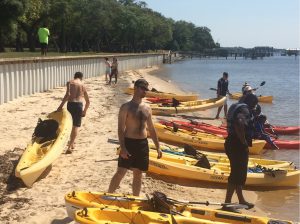
Kayaking Choctawhatchee Bay – Photo by Laura Tiu
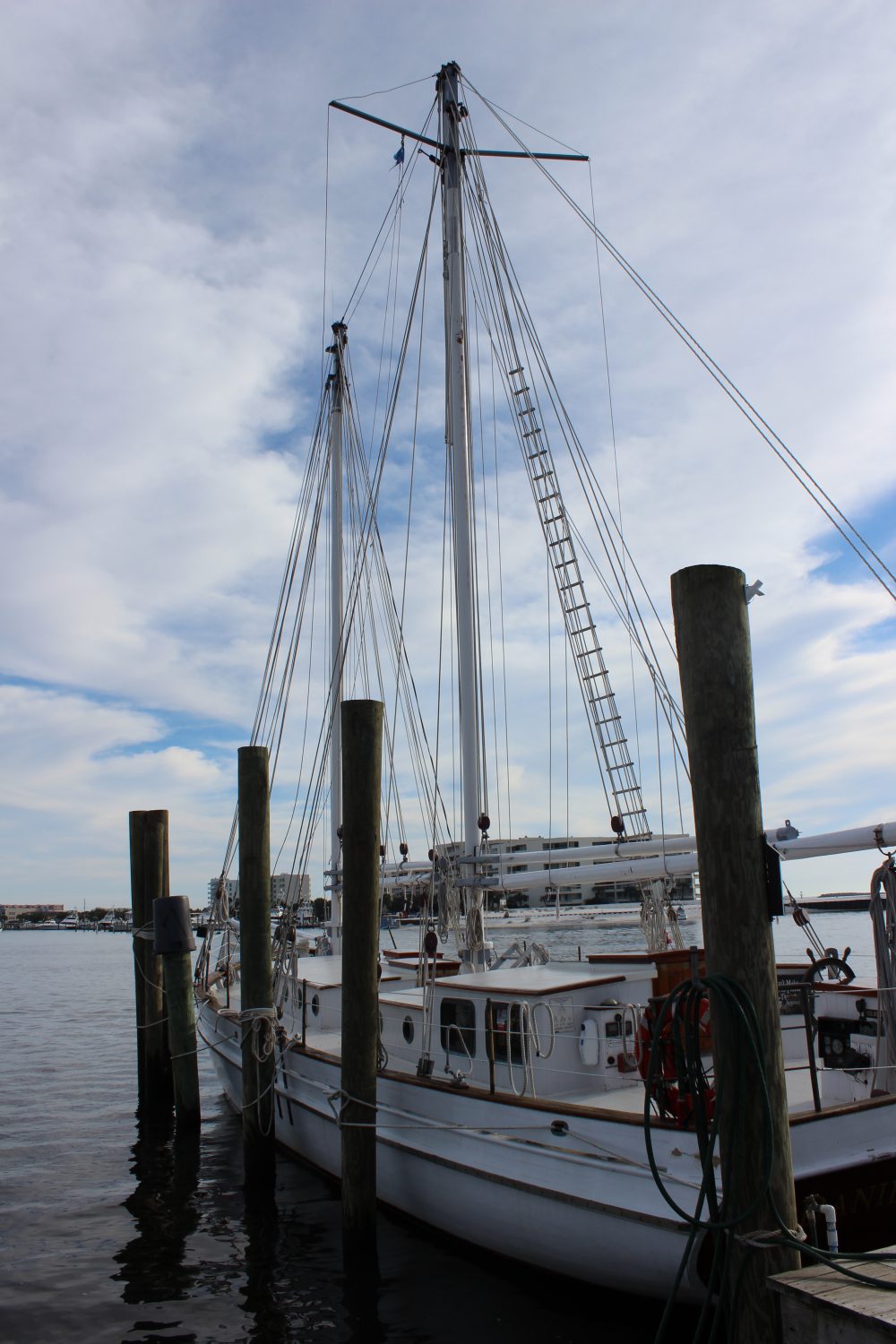
by Laura Tiu | Jul 22, 2016
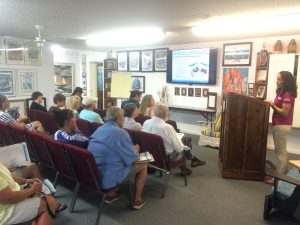
Dr. Monica Wilson, University of Florida Sea Grant, shares an update on the research that has occurred in the past five years since the Deepwater Horizon oil spill. Presented in the Rodeo Room at the Destin History and Fishing Museum. Photo credit: Laura Tiu
The Deepwater Horizon (DWH) oil spill occurred about 50 miles offshore of Louisiana in April 2010. Approximately 172 million gallons of oil entered the Gulf of Mexico. Five years after the incident, locals and tourists still have questions. The Okaloosa County UF/IFAS Extension Office invited a Gulf of Mexico Oil Spill Scientist, Dr. Monica Wilson, to help answer the five most common questions about the oil spill and to increase the use of oil spill science by people whose livelihoods depend on a healthy Gulf.
The event was held at the Destin History and Fishing Museum on Monday evening, July 11, 2016. Executive Director, Kathy Marler Blue partnered with the University of Florida to host the event. “The Destin History and Fishing Museum has a vision that includes expanding its programs to include a lecture series,” said Blue. Over 20 interested individuals attended the lecture and the question and answer session was lively. This was the first in what hopes to be an ongoing lecture series, bringing more scientific information to our county.
Dr. Wilson is based in St. Petersburg, Florida with the Florida Sea Grant College Program. Monica uses her physical oceanography background to model circulation and flushing of coastal systems in the region and the impacts of tropical storms on these systems. She focuses on the distribution, dispersion and dilution of petroleum under the action of physical ocean processes and storms. For this lecture, she covered topics such as: the safety of eating Gulf seafood, impacts to wildlife, what cleanup techniques were used, how they were implemented, where the oil went, where is it now, and do dispersants make it unsafe to swim in the water?
The oil spill science outreach program also allows Sea Grant specialists to find out what types of information target audiences want and develop tailor-made products for those audiences. The outreach specialists produce a variety of materials, such as fact sheets and bulletins, focused on meeting stakeholder information needs. The specialists also gather input from target audiences through workshops and work with researchers to share oil spill research results at science seminars that are facilitated by the specialists.
The Destin History and Fishing Museum is a nonprofit organization whose members are dedicated to preserving, documenting, and sharing the complete history of Destin. Please subscribe to their Facebook page for information on upcoming events. The UF IFAS Extension Okaloosa County office also hosts a Facebook page with announcement of upcoming programs.
For additional information and publications related to the oil spill please visit: https://gulfseagrant.wordpress.com/oilspilloutreach/
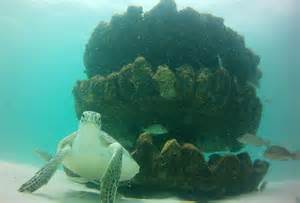
by Laura Tiu | May 8, 2016
Florida has the highest number of sea turtles of any state in the continental US. Three species are common here including loggerhead, green and leatherback turtles. The Federal Endangered Species Act lists all of sea turtles in Florida as either threatened or endangered.
Sea turtle nesting season for the area began May 1, 2016. Adult females only nest every 2-3 years. At 20-35 years old, adult loggerhead and green female turtles return to the beach of their birth to nest. At this age, they are about 3 feet long and 250-300 pounds. The turtles will lay their eggs from May – September, with 50-150 baby turtles hatching after 45-60 days, usually at night. One female may nest several times in one season.
If you happen to see a sea turtle nesting, or nest hatching, stay very quiet, keep your distance, and turn any lights off (no flash photography). You should never try to touch a wild sea turtle. Also, do not touch or move any hatchlings. The small turtles need to crawl on the beach in order to imprint their birth beach on their memory.
During nesting season, it is important to keep the beaches Clean, Dark and Flat. Clean, by removing everything you brought to the beach including trash, food, chairs and toys; dark, by keeping lights off, using sea turtle friendly lighting and red LED flashlights if necessary; and flat, filling up all holes and knocking down sand castles before leaving the beach. If you see anyone harassing a sea turtle or a sea turtle in distress for any reason, do not hesitate to call the Florida Fish and Wildlife Commission hotline at 1-888-404-3922.
There has been encouraging sea turtle news in Florida as a result of the conservation actions being undertaken. There is an increasing number of green turtle nests and a decreasing number of dead turtles found on beaches.
If you want to see a sea turtle and learn more about these fascinating creatures, visit the Navarre Beach Sea Turtle Conservation Center, Navarre, FL, the Gulfarium Marine Adventure Park on Okaloosa Island, Fort Walton Beach, FL, or Gulf World Marine Park in Panama City, FL.
| County |
Beach nesting area (miles) |
Number of loggerhead sea turtle nests |
Number of green sea turtle nests |
Number of leatherback sea turtle nests |
| Franklin |
56 |
608 |
14 |
0 |
| Gulf |
29 |
451 |
14 |
0 |
| Bay |
44 |
170 |
12 |
5 |
| Walton |
30 |
94 |
4 |
3 |
| Okaloosa |
24 |
73 |
6 |
0 |
| Santa Rosa |
7 |
17 |
4 |
0 |
| Escambia |
39 |
86 |
4 |
1 |
Table 1: Data from the 2015 Florida Statewide Nesting Beach Survey available at: www.myfwc.com.

Young loggerhead sea turtle heading for the Gulf of Mexico. Photo: Molly O’Connor
The Foundation for the Gator Nation, An Equal Opportunity Institution.












